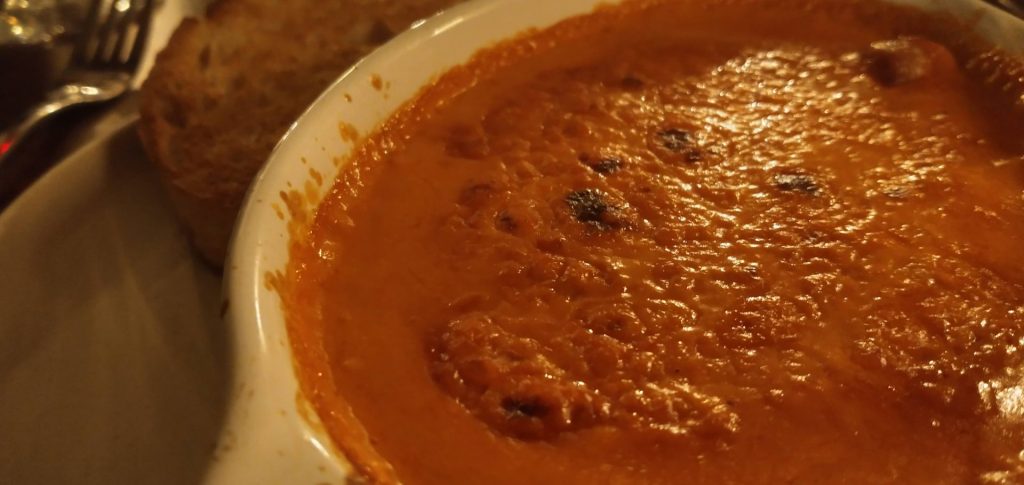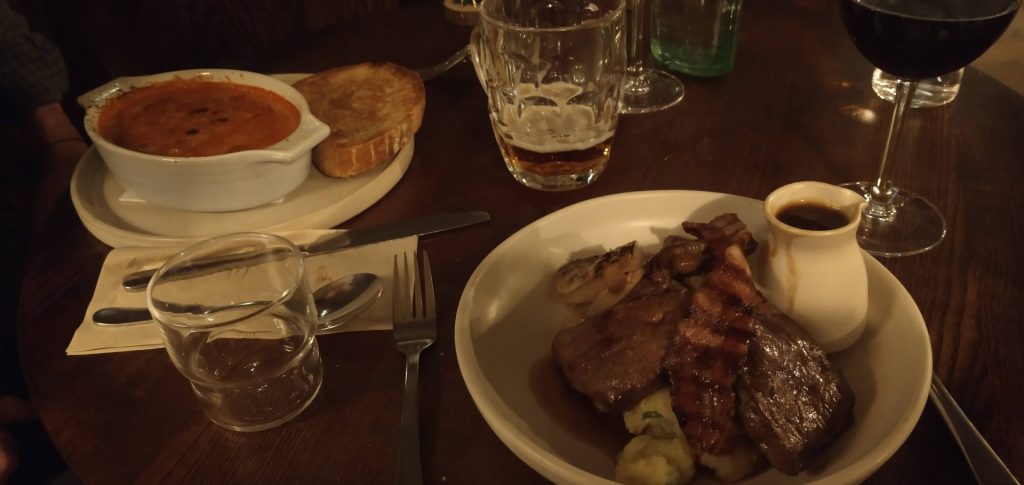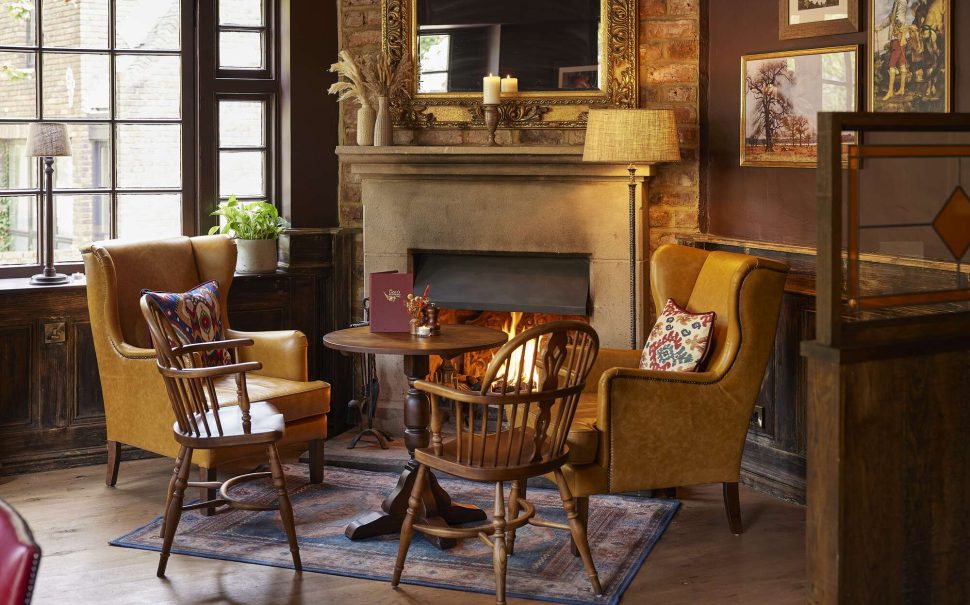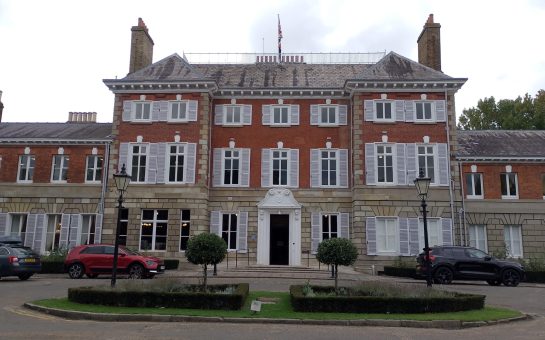The Lass O’Richmond Hill may be under new management, but this gastropub seems to be looking backwards to the basics: good quality ingredients, locally sourced.
The Lass, as it calls itself, prides itself on trying to source all its ingredients from within 90 miles, though some ingredients come from much closer than that, with honey harvested from Richmond Park.
The park, just around the corner from the pub, was an inspiration to the pub’s new image, one of the new managers Chris explained, the green space encouraging a focus on local produce and top quality ingredients.
My friend and I entered from the park, and were guided to a cosy corner from which you could watch the comings-and-goings without being watched yourself.

This was convenient, as this was a popular spot hosting celebrations as well as dining, with the meal soundtracked to Abba.
“This is not the music we normally play”, said the waitress apologetically.
We started on marrow with breadcrumbs, and my friend had stilton with truffle honey, a simple combination of two harmonising flavours: the creamy texture of the Stilton meeting the earthy sweetness.
The marrow was just how you would want it to be: creamy and smooth, with a slightly smoky flavour.
The breadcrumbs also brought a welcome crunch.
This was not an extravagant starter, and the simplicity allowed us to focus on the quality of the individual ingredients.
It was a formula that has served many Mediterranean countries well – fresh ingredients, combined in simple ways, allowing the ingredients to speak for themselves.
The stereotyped English steamed puddings, thick stews and boiled vegetables, often appear designed to hide the quality of the ingredients, but the Lass seems to ask the question – why if English food followed the Mediterranean formula?
It answered this question in exciting ways: despite serving traditional British food, I was intrigued by menu items I had never tried.

My friend could not resist calves liver & treacle bacon, drawn to it by happy memories of the familiar dish served in caffs nationwide.
Needless to say, this was a step-up, but I think he was a little nostalgic of the hashbrowns he remembered rather than the colcannon and burnt pickled shallots.
While he reminisced, for me it was a trip into the unknown: devilled pheasant brulee.
I was told it was made by baking the pheasants whole, removing the meat and then baking it again in its juices mixed with a tomato and cream sauce.
I was warned this was rich, and it was – the dense dark meat heavy in a thick light red sauce, this was just the ticket to warm me in December.
While answering the call for British food focusing on quality ingredients, I could not help but feel that the Park had inspired the management in another way.
Richmond Park was once a royal hunting ground and the menu to me seemed at home at a Tudor feast.
Red wine, marrow and pheasant, and my friend was even called Henry.
Another trope of great food cultures, like the Italians’, is that recipes are unchanged for many decades – a conservative approach aimed at maintaining previous high standards rather than innovating.
I would call the Lass’s food conservative.
But in London, where British food is all but lost, perhaps this is the most exciting cooking there is.
Featured Image: Lass O’Richmond Hill





